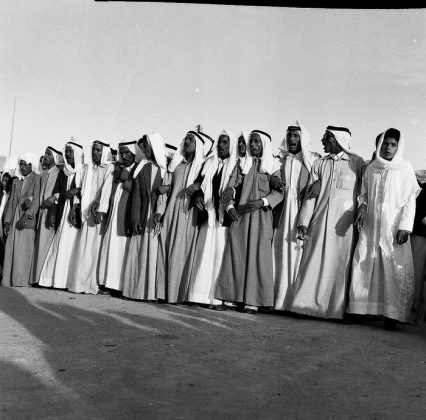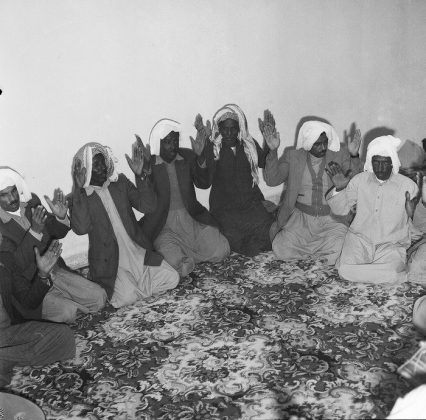Regional and Kuwaiti Bedouin culture is rich with elaborate and expressive dances that reflect the traditions of Arab Gulf nomads. In his book ‘Bedouins in Kuwait’, author Ibrahim Al-Shukri affirmed that the local nomadic culture was “filled” with traditional dances that thrive till this day.
One of the routines is the outdoorsy Al-Qalta dance, which involves male performers standing in two rows facing each other. Each leader of the groups delivers lines in a-call-and-response manner, said Al-Shukri who indicated that this style is very popular during national celebrations and huge social occasions.
A similar dance is Al-Feraisni, which also involves two rows of eight to 10 men in each group clasping their hands together in a show of social solidarity while also reciting a-call-and-response poem. In this style, one group initiates a three-step stride forward and retreat to allow the second group of men to perform the same action, pointed out the author. Al-Mejailsi dance, on the contrary, has two groups of men sitting in a row in front of each other in a poetry call and response routine, stated Al-Shukri. Another style is Al-Dahha, usual performed to celebrate marriage and circumcision of newborns, said AlShukri who indicated that women are allowed to be involved in this rhythmic dance routine. A woman, clad in an elaborate dark dress and a burqa face cover, would usually be in the center of this folklore dance surrounded by arm-clasping men.



















